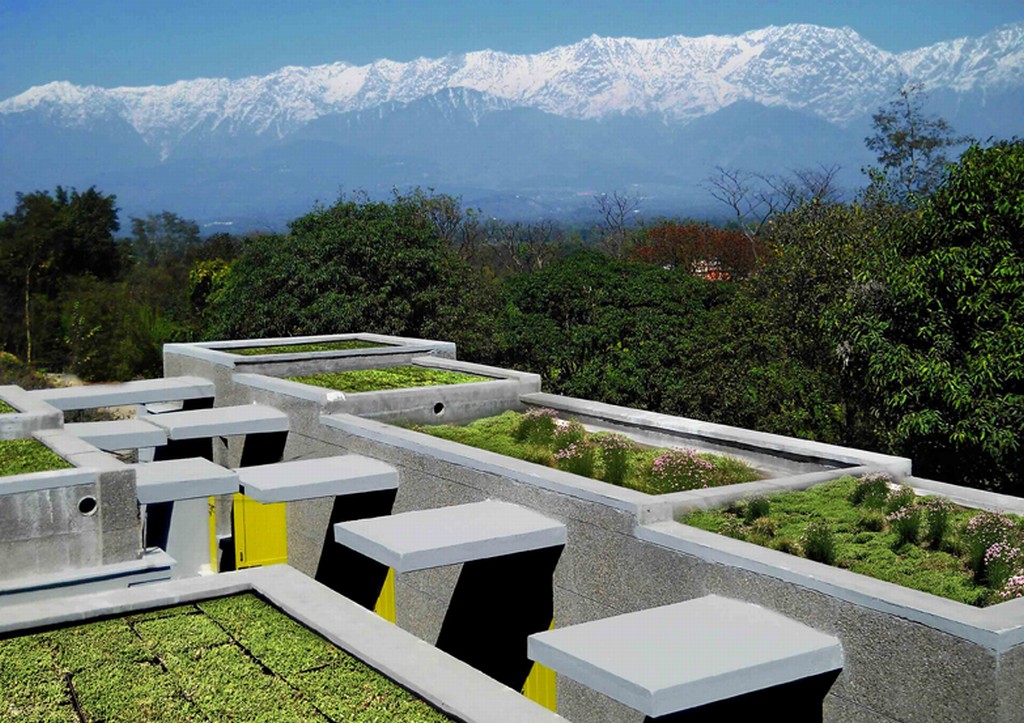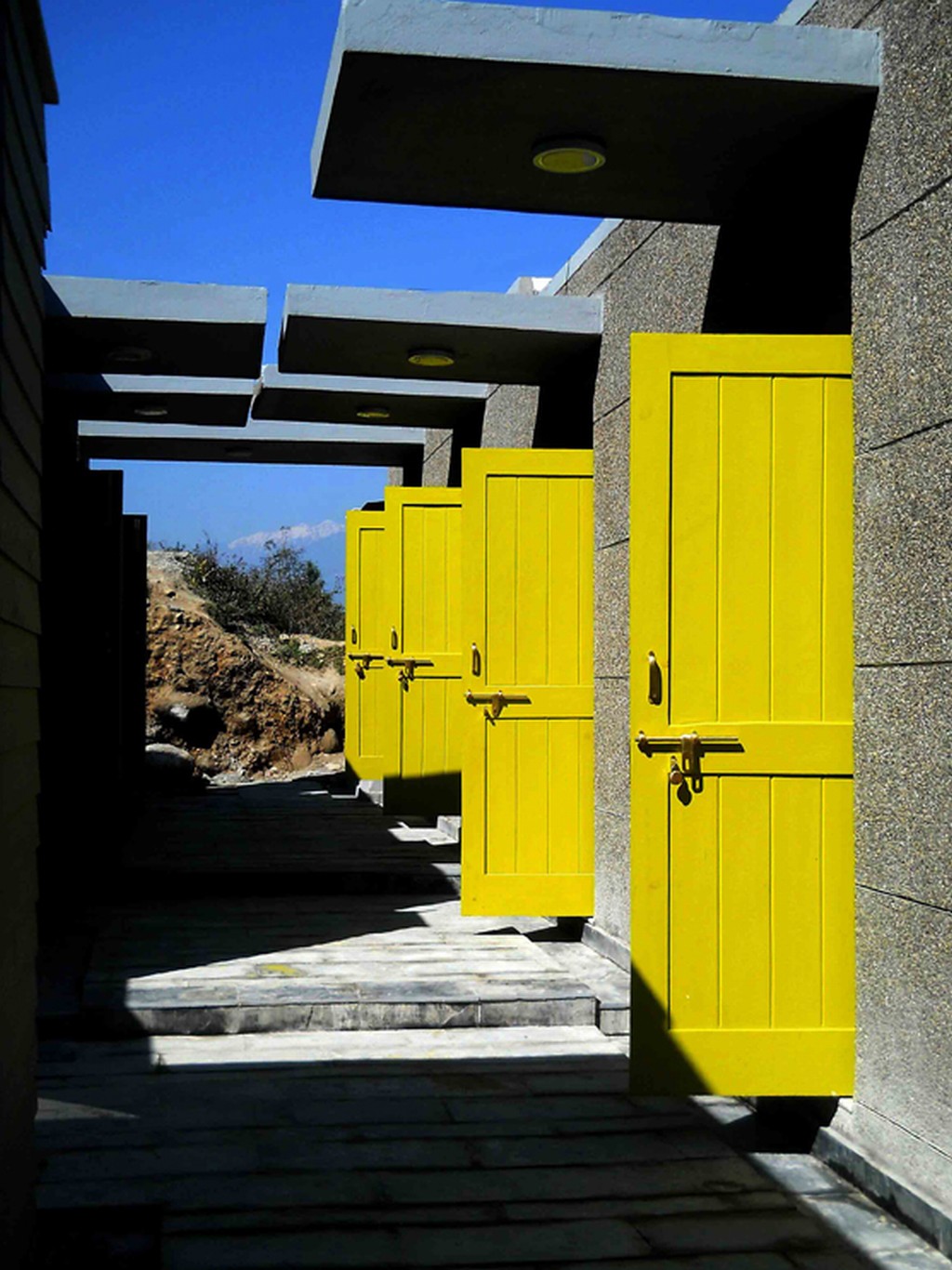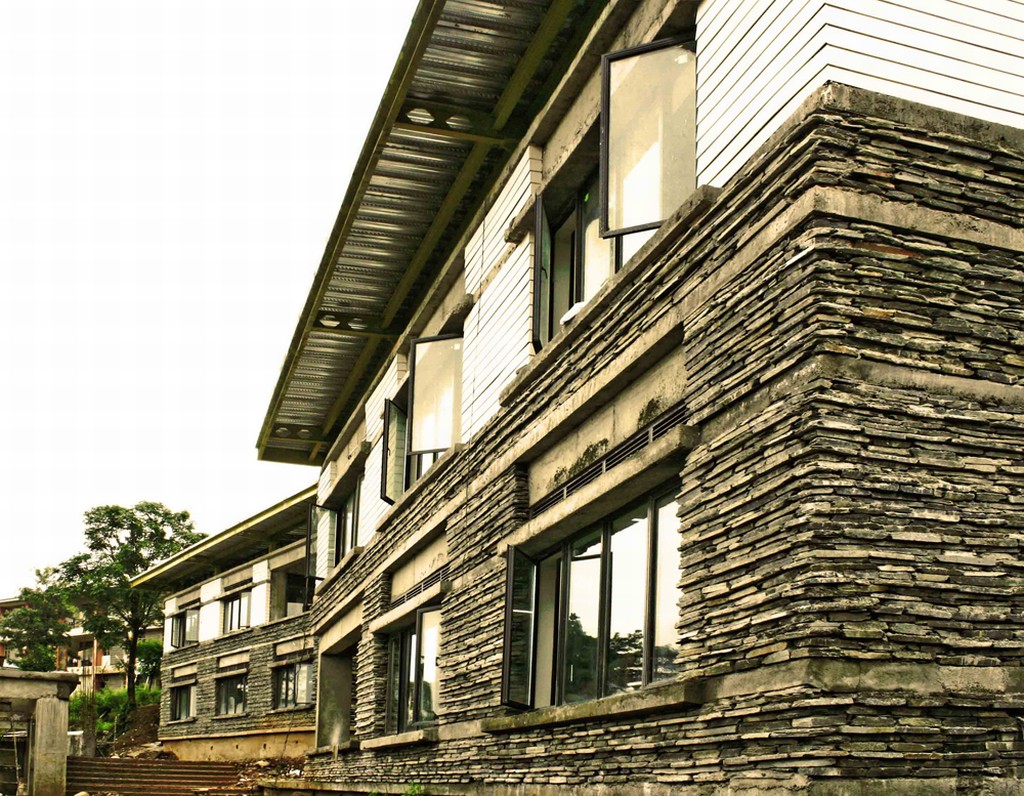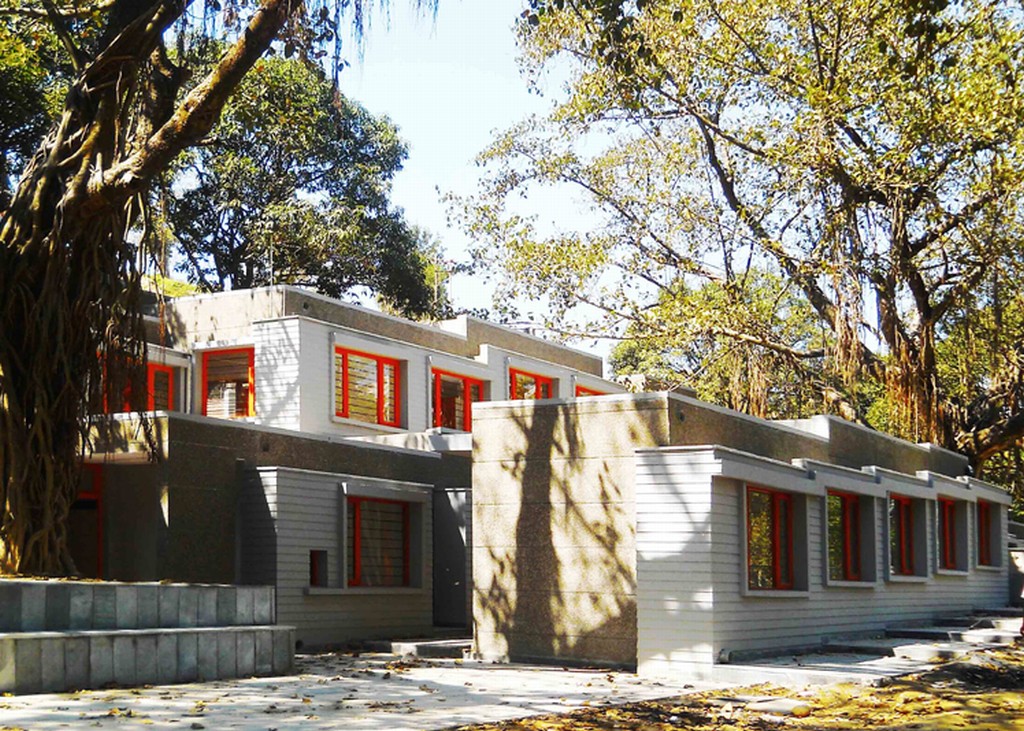National Institute of Fashion Technology, (NIFT Campus)
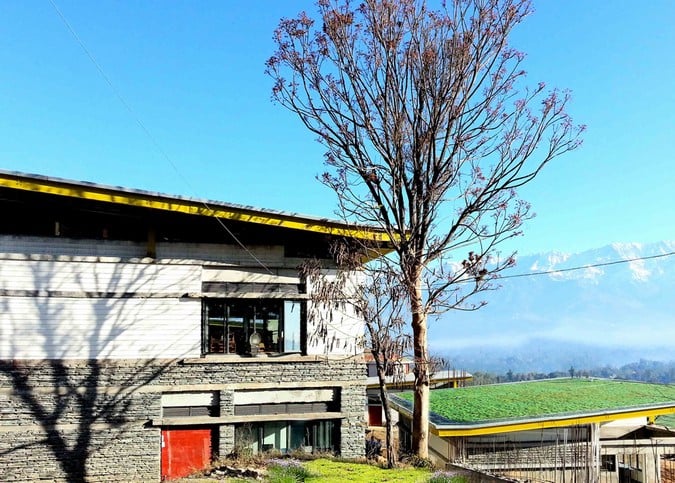
National Institute of Fashion Design, located at Kangra, Himachal Pradesh; was commissioned to us as a winning entry during a National Level competition in 2009. The entire masterplan as a zero discharge 'Green' campus is to be constructed on a steep hilly terrain within the existing old banyan, mango and silver oak trees.
The concept for the NIFT Kangra begins with understanding fashion design as an art form, expressed through a combination of visual graphic with textural quality. We chose to weave the building with the surrounding context; a visual graphic of agricultural fields rich in textural depth and variations, as a natural growth, where paths in the forests grow into the streets of a future urban fabric and the fields translate into urban footprints.
The knitting threads drawn from the existing agricultural terraces, were woven together to make a uniformly flowing pattern of many intersecting functional cuboids. The pattern closely follows the site contours and the design then develops vertically; as an abstraction of the way the Great Himalayas developed, layers of matter folding onto each other, twisting with sudden forces, leaving in between gaps or cracks in the process, that become the passages and places of various kinds of interactions.
Special Design Features
As a respect to the existing trees on site we took up a challenge of designing 150 rooms for the girls hostel without cutting a single tree. Designed through a cellular growth of cubes over the existing contoured topography, the Girls hostel was designed as a play of rooms conceived as positive spaces intersticed with light courts, concieved as negative spaces. These courts were distributed organically around the trees not only in plan but also in sections connected with circulation corridors also within the same modules, reminiscent of the organic streets of the villages of Kangra. These streets with their changing levels, winding around trees continuing like a labrynith create a mysterious story that has multiple beginnings and endings, ever inspiring the students of design to never have constant rigid ideas but a fluid flow of thought during their entire stay here.
Extreme care was taken during the construction to not only protect the trees through a series of retaining walls but at times, the design of the rooms altered and adapted in order to accommodate the spread of the banyan and the mango tree branches. It is a sheer joy to experience this wonderful play of nature and architecture, within multiple verandahs and terraces where, the design students would be able to work with nature surrounding them and the sweet tasting mangoes literally falling in their lap form the trees that surround them.
Green building Aspects
NIFT has a very strong International presence & in today’s world we have to take responsible action in the preservation of the natural wealth. We as an Architectural Design Firm are and have been as committed to making Sustainable Green Building Solutions. We strongly believe and stress upon making NIFT Delhi towards a Zero Discharge campus. What is generated here, namely solid waste, storm water, sewage is used here. Various parameters to make the campus self sustainable like Ground Water recharge, Sewage Treatment plants, Water treatment plants for use in irrigation, flushing & non portable uses on campus , Solar Geysers & Solar landscape fixtures have been fitted in the smallest to largest aspects of the Design. We have already consciously woven the guidelines of GRIHA Rating for New Construction and Major Renovations into the Campus Master plan & design after studying the Site / land topography, Climate , connectivity and local materials & techniques.
The entire campus planned as a zero discharge 'Green' campus was to be constructed on a steep hilly terrain within the existing old banyan, mango and silver oak trees. As a respect to the existing trees on site WE took up a challenge of designing 200 rooms for the girls hostel and residences for the professors without cutting a single tree. Extreme care was taken during the construction by the executing agency DSIIDC and the WE engineers and architects to not only protect the trees through a series of retaining walls but at times, the design of the rooms altered and adapted in order to accommodate the spread of the banyan and the mango tree branches. Its a sheer joy to experiences this wonderful play of nature and architecture, within multiple verandahs and terraces where, the design students would be able to work with nature surrounding them and the sweet tasting mangoes literally falling in their lap form the trees that surround them. The second phase of the project is under construction which includes the academic campus, residences for the professors and the remaining Girls hostel.
Material Palette:
• RCC, Steel
• Local Stone
• Kota, Terrazo, Karappa.
• Aluminium
Tuesday, October 29, 2013 - 12:06


